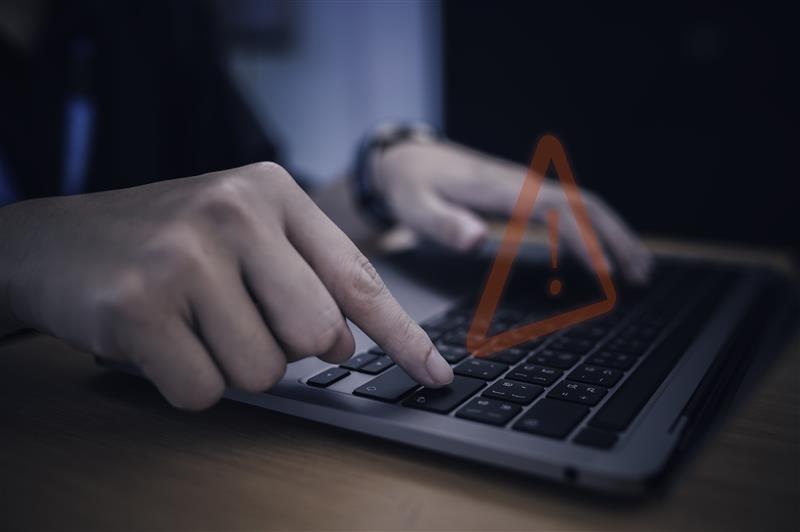Cyber Security Insider threats—intentional or accidental—are one of the most underestimated cybersecurity risks facing organisations today. Whether it’s a disgruntled employee leaking data or a well-meaning staff member falling for a phishing scam, the result can be devastating.
According to leading industry studies, insider incidents now account for over 30% of data breaches globally. Yet, many businesses still lack a structured approach to identifying and managing this risk.
So, how prepared is your organisation to handle insider threats?
In this post, Creative Networks presents a quick yet powerful 5-Question Self-Assessment to help you gauge your current level of readiness—and understand the areas where you might be vulnerable.

What Is Insider Threat?
An Insider Security Threat refers to a Security risk that originates from within an organisation—typically involving current or former employees, contractors, vendors, or business associates who have (or had) access to sensitive systems, data, or networks.
Types of Insider Threats:
Malicious Insiders: Individuals who intentionally cause harm, such as stealing data, sabotaging systems, or leaking confidential information.
Negligent Insiders: Well-meaning employees who inadvertently create security risks through carelessness—e.g., falling for phishing emails, misconfiguring cloud settings, or using weak passwords.
Compromised Insiders: Employees whose accounts or devices have been hijacked by external attackers, allowing outsiders to exploit internal access.
Why Insider Threats in Cyber Security Matter:
They bypass traditional perimeter defenses.
They are harder to detect than external threats.
They can cause serious financial, reputational, and operational damage.
Detecting and mitigating insider threats requires a proactive strategy, including access control, behavior monitoring, employee training, and a clearly defined incident response plan.
What Questions Should You Ask?
1. Do You Enforce Multi-Factor Authentication (MFA) Across All Critical Systems?
Multi-Factor Authentication (MFA) significantly reduces the likelihood of unauthorised access, especially when employee credentials are compromised.
Why It Matters:
- Protects sensitive systems even if passwords are stolen.
- Deters brute-force and credential stuffing attacks.
- Is a basic security requirement for many compliance frameworks (e.g., ISO 27001, Cyber Essentials).
What To Do:
Ensure MFA is enforced across all business-critical applications and regularly audit user login activity to spot unusual patterns.
2. Do You Have a Privileged Access Management (PAM) Strategy?
Privileged accounts—like IT admins, finance staff, or database managers—have access to your most sensitive systems. Without oversight, these accounts pose a huge risk.
Why It Matters:
- A single compromised privileged account can bring down entire infrastructures.
- Insider misuse of privileges is difficult to detect without proper monitoring.
What To Do:
Use a PAM solution that enforces the principle of least privilege, ensuring users only have access to what they need—and nothing more. Regularly review and revoke unused privileges.
3. Are You Monitoring for Unusual User Behaviour?
Behavioural anomalies often precede insider incidents. Monitoring helps detect these early warning signs—before damage is done.
Why It Matters:
- Detects suspicious activity such as large file downloads or off-hours logins.
- Flags changes in user behaviour that could indicate a compromised or malicious insider.
What To Do:
Deploy User and Entity Behaviour Analytics (UEBA) to monitor for patterns like policy violations, unauthorised data access, or attempted privilege escalation.
4. Do You Have a Documented Insider Threat Response Plan?
When an insider threat is detected, every second counts. A lack of planning can lead to delays, confusion, and greater damage.
Why It Matters:
- Quick, coordinated action can contain threats before they escalate.
- Demonstrates compliance with data protection and security standards.
What To Do:
Create a response playbook that outlines:
- How threats are identified
- Who is responsible for what
- How evidence is collected
- How to communicate with internal and external stakeholders
Conduct regular tabletop exercises to ensure everyone knows their role.
5. Are Employees Trained to Recognise Insider Threat Risks?
People are often your first line of defence—and sometimes, the weakest link. Training your staff is crucial.
Why It Matters:
- Prevents accidental insider incidents from lack of awareness.
- Encourages a culture of accountability and proactive reporting.
What To Do:
Run regular Cyber Awareness Training, including modules on:
- Recognising social engineering
- Secure data handling
- How to report suspicious activity anonymously
Support this with phishing simulations and behaviour-based reminders.
How Did You Score?
If you answered “No” or “Not Sure” to any of the above questions, your organisation is likely exposed to insider risks—some of which may already be active without your knowledge.
The good news? Every one of these issues can be fixed with the right approach, tools, and training.
Contact Creative Networks Today
At Creative Networks, we help UK organisations take control of their insider threat management strategy. From developing security policies to deploying advanced detection systems, we support your journey from assessment to mitigation.
Don’t wait for an internal breach to make a move.
Contact Creative Networks today for a free consultation and secure your organisation from the inside out.




